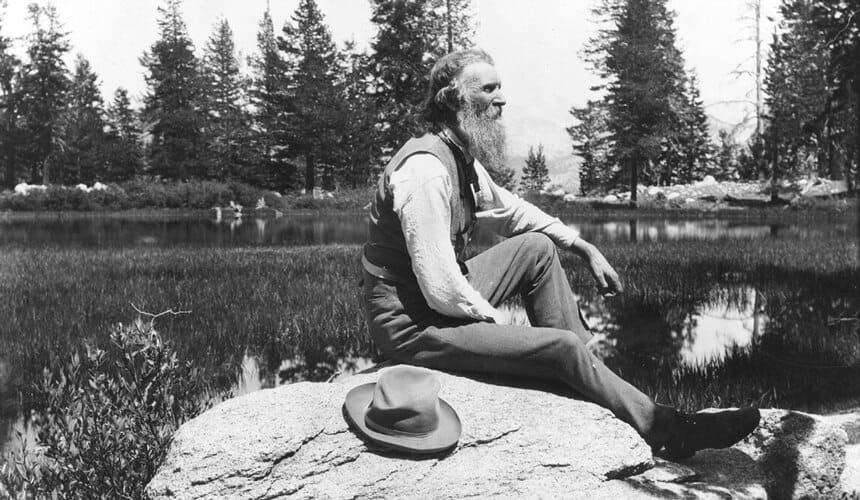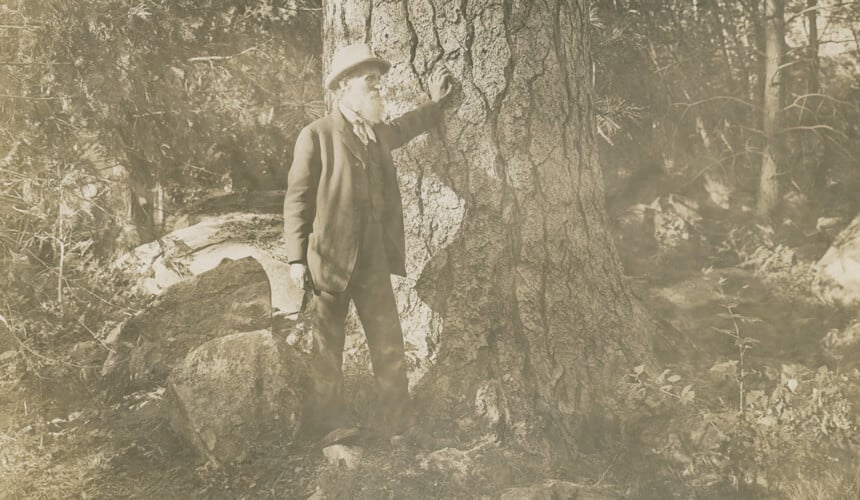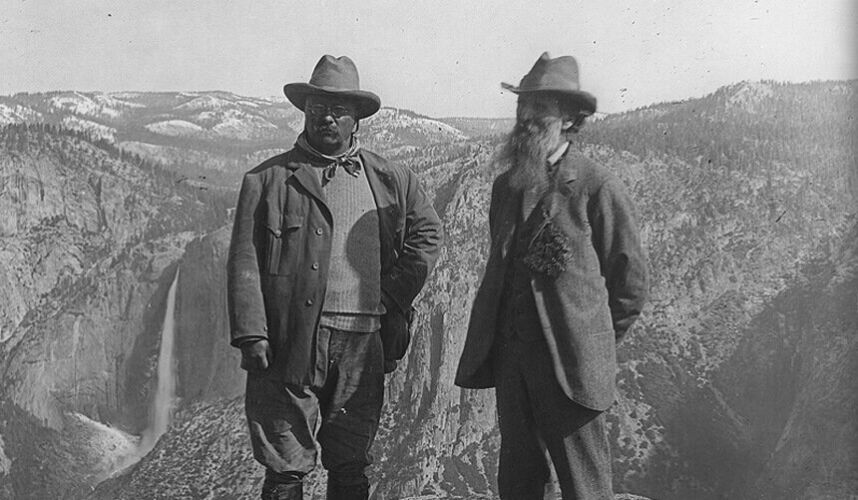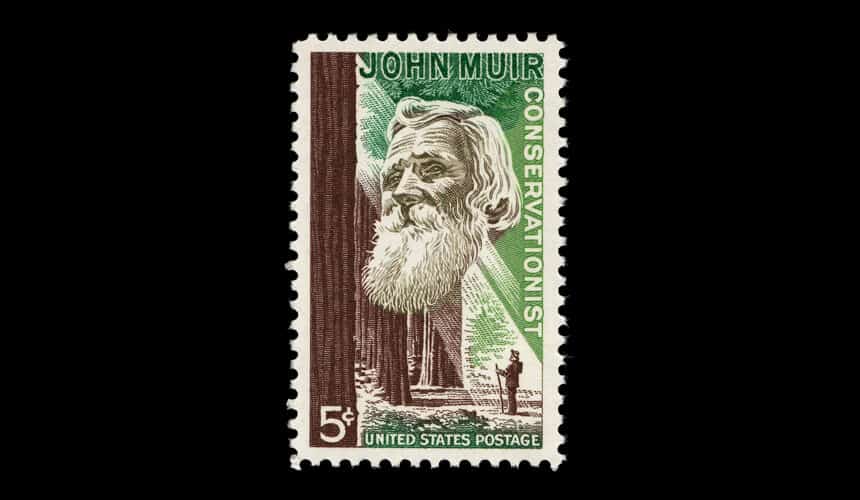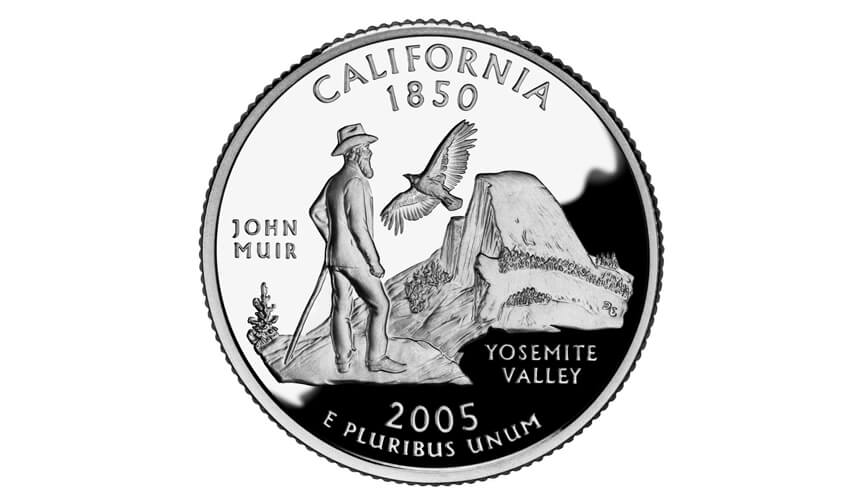John Muir
Nature’s Evangelist
Beneath a black locust tree on the brow of Bascom Hill, near North Hall, UW student Milton Griswold BA1863, MA1866 gave a classmate an impromptu botany lesson on a spring day in 1863.
Griswold plucked a branch from the tree and told comrade John Muir about the similarities between the locust flower and that of the pea family. His words struck a spark of discovery that set the course of conservation history.
“This fine lesson charmed me and sent me flying into the woods and meadows in wild enthusiasm,” the Scottish-born, Marquette County–raised Muir wrote.A clever inventor who devised a bed that turned him out onto the floor of his dormitory room at an appointed hour each morning, Muir found himself gathering specimens around Madison’s lakes and studying them at night.
He left the university without a degree in 1863 and later embarked on a 1,000-mile walk to the Gulf of Mexico and eventually to Alaska. In California’s Yosemite Valley, he was called “John of the Mountains.”
From The Park
The power of imagination makes us infinite.
Source: John Muir: John of the Mountains: Unpublished Journals of John Muir – Exploring the Sequois Belt from Yosemite to the White River, Tulare County, 1875
He worked to preserve Western forests and advocated legislation establishing Yosemite as a national park in 1890. He championed Kings Canyon and Sequoia National Parks, co-founded the Sierra Club in 1892, and became known as the “Father of the National Parks.”
Stamps and coins bear his likeness; natural areas bear his name; even a small planet is named for him. UW–Madison honors him with Muir Knoll, overlooking Lake Mendota.
Though his fame was secured out West and through prolific writings, Muir remained fond of campus. He recalled departing Madison:
“God has cared for these trees, saved them from drought, disease, and avalanches; but he cannot save them from fools — only Uncle Sam can do that.”
“From the top of a hill on the north side of Lake Mendota, I gained a last, wistful, lingering view of the beautiful University grounds and buildings where I spent so many hungry and happy and hopeful days. There, with streaming eyes, I bade my blessed Alma Mater farewell. But I was only leaving one University for another — the University of the Wilderness.”
 82° F
82° F